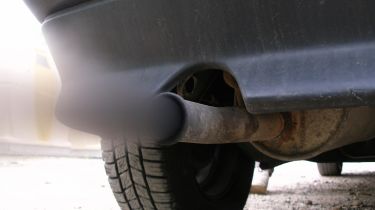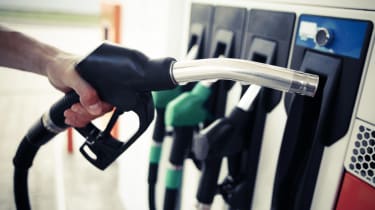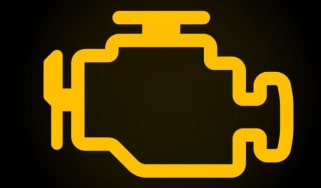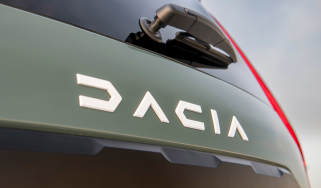Diesel Particulate Filters: what is a DPF and which cars come with one?
All modern diesel cars are fitted with a Diesel Particulate Filter (DPF). We explain what it is, why your car needs one and how to keep it maintained

For the past decade or so almost all diesel cars have been fitted with a diesel particulate filter (DPF). As its name suggests, this device forms part of the car’s exhaust system and is designed to reduce the amount of harmful particulates, or soot as it’s more commonly known, from entering the atmosphere.
Yet while this device is beneficial for the environment, it can become a potential pitfall for drivers of diesel vehicles fitted with the kit. Unless you’re planning on doing a higher annual mileage or frequent faster journeys, then the DPF can’t ‘regenerate’ (effectively clean itself) properly, which can lead to it getting clogged and, potentially, landing you with big repair bills.
However, it is possible to avoid this problem if you can make sure the car is fully up to working temperature for the correct amount of time when driving. Better still, many cars will warn you when a DPF ‘regen’ is required, ensuring you’re able to keep the unit running at its optimum temperature and avoid shutting the engine off when it’s part way through its cleaning cycle. That said, ‘forcing’ this cycle can often be a false economy in the long run as you’ll often need to drive the car for longer and greater distances on unnecessary journeys to keep the DPF in tip-top shape.
With diesel engines increasing under fire as a result of various manufacturers ‘cheating’ a number of emissions tests a decade or so ago, the DPF has become one of many devices aimed at cleaning the fuel’s exhaust gases and emissions. Increasingly technical solutions such as selective catalytic reduction and AdBlue have made diesels even cleaner, but with greater complexity and more potential for problems. However, in this article we’re going to look more closely at the DPF, what it is, how it works and how you can avoid costly repairs.
What is a DPF filter?
Unlike the spark-ignition of a petrol, a diesel’s compression-ignition combustion process releases a lot of soot when it’s burned. Because soot can cause big issues for the environment and people’s health, the DPF’s job is to catch it before it gets released into the atmosphere. DPFs have been mandatory on diesel cars since 2009, but many diesels sold before that date were sold with them already as manufacturers aimed to get ahead of the legislation and cash in on buyer demand for greener and more efficient engines.
DPF cleaning

While a DPF’s first job is to trap and hold onto harmful particulates, it needs to get rid of them, too. It does this by exposing them to very high temperatures, burning the particulates and turning them into harmless ash, in a process called DPF regeneration. This is why diesel cars need to be driven for extended periods of time to allow the exhaust system to get hot enough to operate correctly. It’s recommended that you take your diesel car on a long and brisk drive on the motorway, dual carriageway or fast A-road for half an hour or longer at least once a month. Many specialists will also advise keeping the car in a lower gear (say fourth in a six-speed manual model) at the relevant speed limit to keep engine revs up for higher temperatures and a more efficient burn of the DPF’s contents.
DPF regeneration: passive and active
The DPF can start regeneration in a couple of ways, but both need the exhaust gases to get extremely hot – usually around 500 degrees Celsius. As a result, diesel cars aren’t particularly suitable for people who only do short journeys around town because the exhaust doesn’t get hot enough for regeneration to occur, meaning soot builds up and the DPF can’t get rid of it. Eventually, the soot will block the DPF completely and cause engine problems like reduced fuel-efficiency and misfiring, before the engine management system forces the car into limp mode with heavily reduced performance.
‘Passive regeneration’ takes place when you regularly drive your car at speeds above 40mph for extended periods as part of your usual use cycle. Doing this will allow the DPF to burn off the particulates under normal running temperatures and so you shouldn’t be aware of the process happening at all.
If you don’t drive at speed often, the engine will try to clear the DPF via ‘active regeneration’. This is where the engine injects extra fuel into the exhaust in an effort to artificially increase the temperature on even a short run, allowing the DPF to burn off the soot. Some diesel engines are designed to do this more often than others.
 Petrol or diesel: should I buy a diesel?
Petrol or diesel: should I buy a diesel?
Most cars have a two-stage warning system to let you know when the DPF is becoming clogged. If you see an amber light, you should be able to get the DPF to regenerate itself by driving over 40mph for about 10 minutes. If you see a red DPF warning light, however, this means you need to pull over to the side of the road and phone your breakdown company to take you to the garage as further driving is likely to lead to expensive repairs.
DPF repair
If the DPF light comes on, it’s usually a warning that the device needs cleaning. You can check our helpful guide to dashboard warning lights here. Your car’s handbook will tell you how to drive in order to make this happen. If you follow these instructions and the light doesn’t go out, you need to take the car to a dealer as soon as possible. While it’s possible to buy DPF cleaner fluids from various motor factors and spare part suppliers, the jury is out on how effective these are. Ultimately, DPF cleaning is a job best left to the professionals.
Depending on how badly blocked the DPF is, the dealer may be able to use special DPF cleaner products and techniques. If it doesn’t offer this service, ask if the DPF can be removed and sent to a specialist firm for cleaning. This process should cost around £100 – although the garage will obviously charge you for removing and refitting the filter.
If you’re unlucky, excess soot may have damaged the DPF beyond repair. If this is the case, it will have to be replaced, which can cost as much as £2,000 or more. Shopping around for an aftermarket DPF could save you some money, however.
List of cars with a DPF
As mentioned above, all diesel cars produced from 2009 on will have a DPF, while larger cars and trucks may have needed one fitted much earlier to comply with 2004’s ‘Euro 4’ emissions targets. If you’re not sure, you can find out if your car has a DPF by looking in the handbook. If your car requires an oil with a low ash content, that can also signify that it has a DPF.
All VW Group 1.6-litre diesels produced before 2009 have a DPF, including any Skoda Greenline models. Volvos produced after 2006 will almost certainly have a DPF, and all Land Rovers from 2010 (including the Range Rover Evoque) have them. All 1.6-litre and 2.0-litre Ford TDCi engines also have a DPF, as do the majority of Kia diesels built from 2008.
Should I consider DPF removal?
No. While there are plenty of unscrupulous individuals offering a DPF delete or removal, doing so will only end badly. Not only will you be causing unnecessary damage to the environment, your car will automatically fail its MOT test because it’s emitting more harmful gases than it should.
One final word of caution: if you own a diesel car, make sure you know how to get your DPF to regenerate, so you can do it as soon as you see the warning light come on. Stopping the car (which you’ll need to do to consult the handbook) can make the blockage worse. And, if you frequently turn off the engine while the DPF is going through the regeneration cycle, it can lead to severe engine damage.
Why do diesel emissions matter? Our article on the evolution of diesel and emissions explains all. Many modern diesel cars also come with AdBlue, so read our guide for all you need to know.
Recommended

Engine management light: top 5 causes of amber engine warning light

How to charge your electric car without a driveway
Most Popular

Engine management light: top 5 causes of amber engine warning light

Best new car deals 2024: this week’s top car offers

Dacia introduces seven-year ‘Zen’ warranty for new and used cars
Tips & advice









